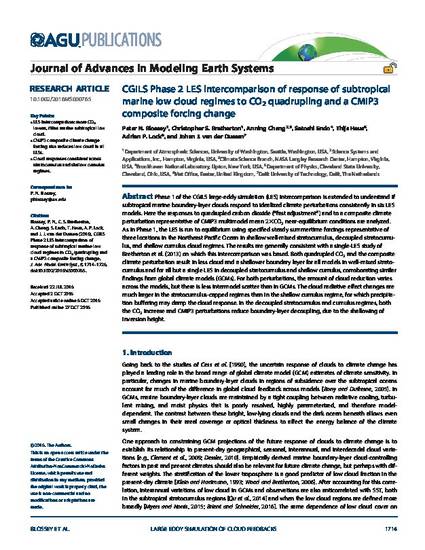
© 2016. The Authors. Phase 1 of the CGILS large-eddy simulation (LES) intercomparison is extended to understand if subtropical marine boundary-layer clouds respond to idealized climate perturbations consistently in six LES models. Here the responses to quadrupled carbon dioxide (“fast adjustment”) and to a composite climate perturbation representative of CMIP3 multimodel mean 2×CO2 near-equilibrium conditions are analyzed. As in Phase 1, the LES is run to equilibrium using specified steady summertime forcings representative of three locations in the Northeast Pacific Ocean in shallow well-mixed stratocumulus, decoupled stratocumulus, and shallow cumulus cloud regimes. The results are generally consistent with a single-LES study of Bretherton et al. () on which this intercomparison was based. Both quadrupled CO2 and the composite climate perturbation result in less cloud and a shallower boundary layer for all models in well-mixed stratocumulus and for all but a single LES in decoupled stratocumulus and shallow cumulus, corroborating similar findings from global climate models (GCMs). For both perturbations, the amount of cloud reduction varies across the models, but there is less intermodel scatter than in GCMs. The cloud radiative effect changes are much larger in the stratocumulus-capped regimes than in the shallow cumulus regime, for which precipitation buffering may damp the cloud response. In the decoupled stratocumulus and cumulus regimes, both the CO2 increase and CMIP3 perturbations reduce boundary-layer decoupling, due to the shallowing of inversion height.
Available at: http://works.bepress.com/thijs-heus/29/